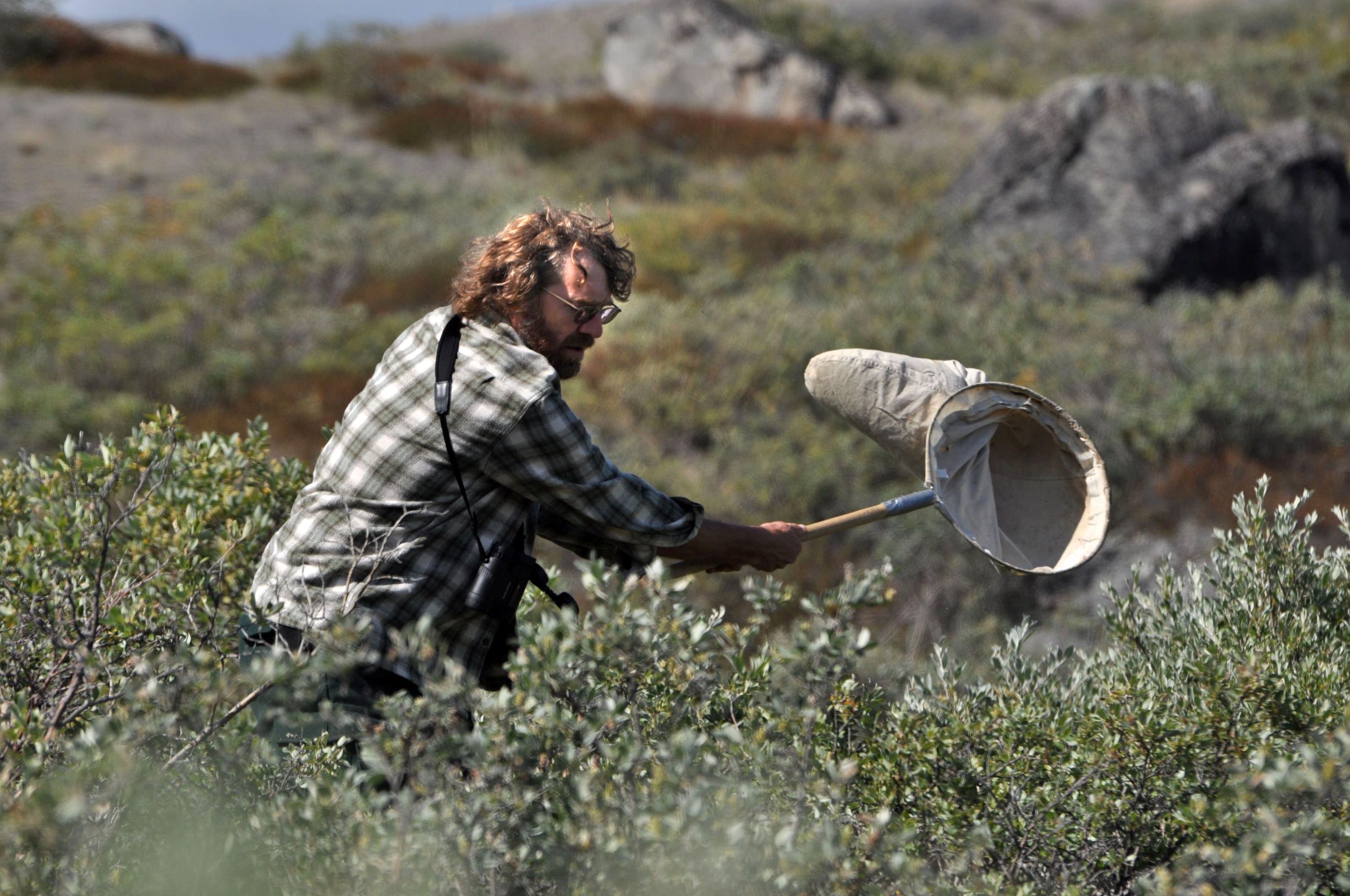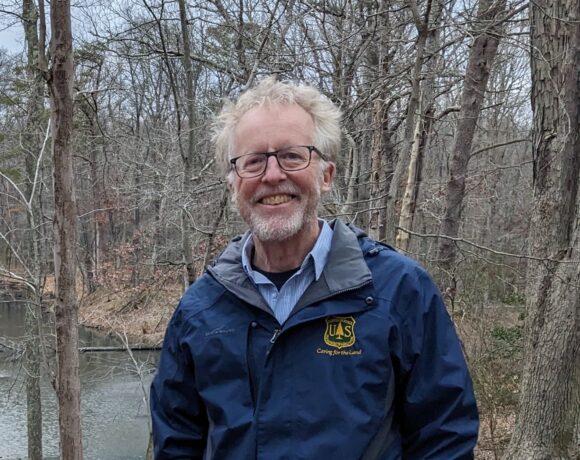by Abby Bezrutczyk
Dr. Matt Ayres of Dartmouth College has been studying forest insects for decades. NYISRI is pleased to feature his work in this month’s researcher spotlight:

There’s a rising tide of forest pests. Many insects, while native to the U.S. are spreading northward, venturing into new areas on the back of climate change. To some, this forest pest and climate change interaction is the new hot topic, but Dr. Matt Ayres of Dartmouth College has had his eye on the issue for decades. From his research on southern pine beetles to broader questions of forest pest ecology, his research is informing policy that can help protect the future of our forests.
While many might turn (or run) away from the sight of an insect-infested tree, a young Ayres was awed by it. It was the forest tent caterpillars, a native species with cyclical population dynamics and a tendency for outbreaks, that caught his attention. “I can remember vividly,” Ayres begins, “around the cottage where we were staying to go fishing, there were caterpillars dripping from the foliage, and frass raining from the trees, and the leaves disappearing while I watched them.” This led to his lifelong fascination in various insects, building a career that has tracked forest pests around the country.
The research in his lab centers around the ecology of various insects, but for the past 25 years Ayres has had his eye on the southern pine beetle (Dendroctonus frontalis)– a bark beetle the size of a rice grain, native to the southern U.S., whose explosive populations can rapidly kill several pine species. “One of the overarching questions in ecology is, ‘Why are most species absent from most places? What are the limits on distributions?” Ayres asks, “So, why is it the ‘southern’ pine beetle? Why doesn’t it occur further north?”
Years of collaborative research led Ayres to the answer: it’s the climate. Specifically, the range-limiting factor for the southern pine beetle is the coldest night of the winter. When the temperature drops on that fateful night in the north, the southern pine beetle, and other forest pests, can’t survive.
But here’s where climate change enters the conversation: warmer temperatures make that coldest night not so cold anymore, allowing southern pine beetles to expand northward. Ayres began research on the southern pine beetle while working with the forest service in Louisiana, but now living in New Hampshire he only needs to drive 90 minutes to find the range-expanding insect.
“There’s going to be a rising tide of species from farther south that are going to be invading, extending their distributions into areas where they haven’t been before,” Ayres explains, citing the northern spread of ticks and lyme disease as one consequence. Not only do the warmer temperatures promote range expansion, but they also potentially make them develop and reproduce faster. One positive note? The polar vortexes of February are good for something– giving a hit to these invaders, or at least buying us a little more time.
While the native insects continue to expand their range, there’s another side of the equation to consider: the non-native invasive insects, like emerald ash borer (EAB, Agrilus planipennis). Foresters across the country are all too familiar with the damage that this insect has caused: devastation to timber industries and natural areas alike. “And once emerald ash borer or hemlock woolly adelgid gets here, there’s pretty much nothing that can be done.” Ayres says, “All we can do is watch. But the next ones, they’re knocking at our door all the time.”
On this topic, however, Ayres has more optimism: he says preventing the next EAB should be easier than solving acid rain. “The political adversaries of solving acid rain were formidable… and yet, we were able to do it,” says Ayres. What it takes is policy: stopping the introduction of such insects by controlling the shipping materials, like wood pallets, that carry them. Targeted control also helps whenever possible, as Ayres explains, “If we can identify the particular ones that are most likely to produce high impact, it becomes practical to do targeted prevention measures,” He cites that research in this area is already successfully underway at the University of Maine.
Whether it’s natives expanding north or invaders arriving from overseas, the Northeast has a burden of invasive forest pests. Knowing more about the insect’s spread, through research like Ayres’s, is certainly valuable. But what can the average person do to prevent the spread of these pests? Ayres is ready to share such practical advice: “Don’t buy plants that came from a long ways away,” he says, “When you go to buy plants, ask where it came from, and, and preferentially buy things that were produced locally,” in an effort to stop the spread of invasive hitchhikers in the horticulture trade. “That’s a small thing that anyone who ever buys plants can do,” and in this field, every small action for prevention can make a forest-sized difference.
Resources
- Ayres Lab webpage
- Forest pests and their management in the Anthropocene: Presentation by Matt Ayres at the 2021 Regional Invasive Species and Climate Change (RISCC) Symposium
- Forest Pest Risk is Heating Up: Management Challenge resource from RISCC (Feb 2021).
Read more researcher spotlights:













